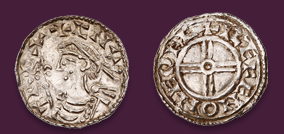
Auction: 5005 - Orders, Decorations, Campaign Medals and Militaria
Lot: 554
An Extremely Rare North Russian M.C. for the Suppression of the Slavo-British Legion Mutiny at Troitsa, in a Group of Five to Captain A.M. Barrett, Berkshire Regiment and Essex Regiment Military Cross, G.V.R.; 1914-15 Star (2 Lieut. A.M. Barrett. Berks R.); British War and Victory Medals (Capt.); India General Service 1908-35, one clasp, North West Frontier 1930-31 (Capt. M.C., Essex R.), good fine, the last good very fine (5) Estimate £ 1,400-1,600 M.C. London Gazette 21.1.1920 (North Russia) Captain, R. Berks. R., Spec. Res.
´He was the commander of one of the companies of Dyer´s battalion during the mutiny occurring in that battalion at Troitsa on 7th July 1919. He was instrumental in stopping the mutiny, and maintained his company steadily on parade during heavy fire absolutely owing to his courage and determination. He entirely prevented a disaster.´
Captain Alfred Mouat Barrett, M.C. (1896-1934), Second Lieutenant, 8.8.1914; first saw active service on the Western Front between February and May 1915, with the 1st and 2nd Battalions (Special Reserve) The Royal Berkshire Regiment; Captain 12.2.1917, and throughout 1917 was employed in operations in the Eastern Mediterranean.
THE MUTINY AT TROITSA The formation of the Slavo-British Legion had been controversial from the start. General Ironside had been willing to believe that the Legion, recruited from former Bolshevik P.O.W.s, deserters, and even prisoners from the local goals, could, with training, play a useful role against the Bolsheviks in North Russia. ´The Whites were sceptical of what Ironside later called this ´experiment´. Prince Marusi thought that the SBL was no more than a collection of ´gangsters´, and the Provisional Government wanted many of its men to be shipped to an offshore island camp. The answers to such criticism lay, so the Legion´s defenders claimed, in the quality of British officers and the discipline they implanted into these apparently recalcitrant recruits. The formation and training of the Legion became an exercise in local British prestige.
Faith in the fighting qualities of the SBL was quickly vindicated. The 1st battalion (or Dyer´s, after Lieutenant Dyer, its first commander and instructor) performed well during heavy fighting in January 1919 when one Sergeant and nine men held a blockhouse to the last man. Three platoons attached to the King´s Liverpools during an attack on Kodish in February gained one Distinguished Conduct Medal and four Military Medals. The continuing courage of the unit and its devotion to service were rewarded on 1 June (George V´s birthday), when Ironside presented Dyer´s battalion with its Colours at a public ceremony in Archangel. The presentation was a prelude to the battalion´s service with Grogan´s column at the end of June. Official inquiries undertaken after the mutiny insisted that the men were all in good heart, ´showed no disloyalty´ and were glad of the chance to fight shoulder-to-shoulder with British Regulars. Yet there were undercurrents of doubt among some of the battalion´s officers... On 4 July, soon before taking up their positions on the west bank of the Dvina, the SBL was inspected and everything was found to be most satisfactory with no signs of restlessness. B and C Companies were placed in a village, Tuisamnika, close by the river bank, while the rest were in adjacent villages inland. At 2.00 a.m. Lieutenant Komarov inspected the lines and found everything quiet. Half an hour later, eight men, led by Corporal Nuchev and Private Leuchenko, approached the two-roomed hut where several British and Russian officers were sleeping. Nuchev shot dead Captain Finch through a window and the others shot and killed two British and four Russian officers and three orderlies. The killing of the two companies´ commanders was a signal for the start of the mutiny. The sound of the firing roused all the men of B and C companies whom the ringleaders rallied with threats and told to desert to the Bolsheviks.150 chose to do so....At the same time as the SBL mutiny, there was an uprising by 200 men of the 4th North Russian Rifles, who were stationed close by at Troitsa. Two British officers and the HQ Company servants were disarmed and locked up in the village bath-house whilst the mutineers, who included a machine-gun company, took over the position. Rifle and Lewis-gun fire between 2.30 and 3.00 a.m. alerted nearby units which were soon informed of the two mutinies. Once it was clear what had taken place, artillery fire was directed against the mutineers, probably from the 4th NRR, who were picketed out on a hillside. Half a dozen shells drove them from cover in adjacent woods. Ironside was immediately sent for and, when he arrived by launch from Ossinovo with reinforcements from the 45th Royal Fusiliers, an attempt was made to round up those mutineers who were still loitering in the woods. They were surrounded by a pincer movement and rounded up after a skirmish in which three were killed and two ringleaders were wounded.... An immediate and unavoidable consequence of Dyer´s battalion´s mutiny was the disarming of all other detachments of the Slavo-British Legion on 16 July.´ (´Mutiny´ by Lawrence James, refers.)
´
Sold for
£2,000




